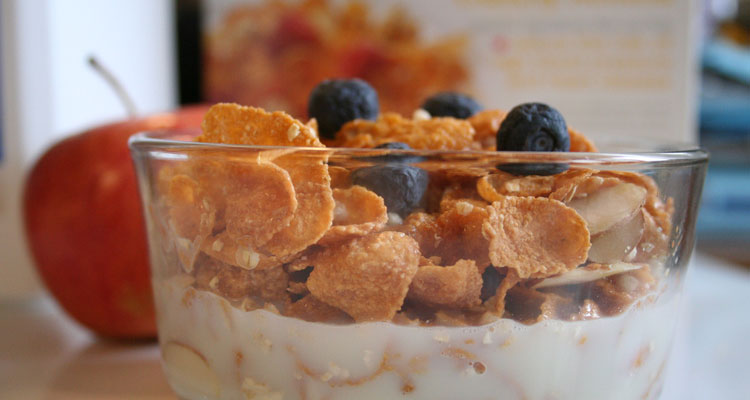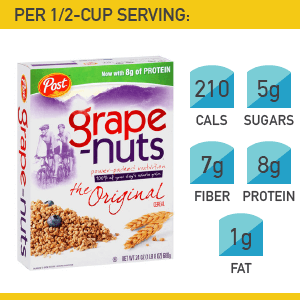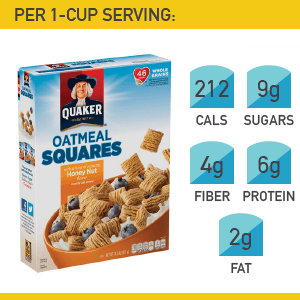Raise your hand if you enjoy a good bowl of cereal, at least now and then, for a quick breakfast.
It’s fast as can be to prep and so easy that most kids can fix it themselves. It’s quick to eat and tastes satisfyingly good. And parents can even use it as a means to add the nutritional value of milk and fresh fruit to their youngster’s diet.
But what about cereal as a between-meals snack?
“There is nothing wrong with an old fashioned bowl of cereal with milk to curb your cravings,” maintains Kari Leland, clinical nutrition manager at Georgetown University Hospital.
Writing for SFGate’s HealthyEating.com, Leland says: “With a little creativity, you can make cereal a delicious and interesting treat. Combine your favorite cereal with some dried cranberries, almonds, and a few dark chocolate chips for a nutritious trail mix. Adding cereal to low-fat yogurt will provide you with protein along with a satisfying crunch.”
Of course, cereal selection requires sensibility. Some cereals are substantially healthier than others.
A 2014 study of more than 1,500 cereals by the Environmental Working Group found that children’s cereal contained an average of 40 percent more sugar per serving than adult cereals.
According to the analysis: “The average ‘serving’—an unrealistically small amount, in most cases—had nearly as much sugar as three Chips Ahoy! Cookies. . . . Because the ‘serving’ size given on the label does not reflect what Americans actually consume, people who eat sweetened cereal every day can wind up with much higher sugar intakes.”
In addition to sugar, the website Mamavation, in listing its Top 10 Most Toxic Kids’ Cereals, cites GMOs, hydrogenated oils, BHA, and soy lecithin among ingredients to avoid. Its list of cereal offenders includes Fruit Loops, Lucky Charms, and Fruity Pebbles.
Thus, a bit of common sense in the grocery aisle is required.
“If it has marshmallows in it, it probably isn’t good for you,” suggests Kissairis Munoz, writing for Greatest.com. “Still, cereal sometimes gets a bad rap for being packed with sugar, low in protein, and generally lacking nutritional value,” she says. “The abundance of choices in the supermarket aisle means there are some healthy options hiding behind Toucan Sam.”
Munoz compiled a list of The 20 Cereals That Are Actually Healthy (and How to Pick ’em). Learning Liftoff has narrowed that list to five suggestions that are readily available at national chains and generally appealing to kids and parents alike. Here they are, in no particular order:
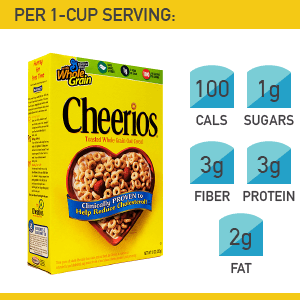
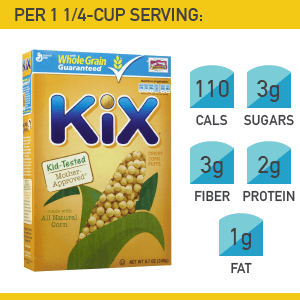
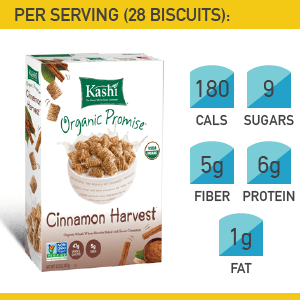
Grape-Nuts: This Post product has been around forever and, honestly, kids will either love or hate the tiny, crunchy nuggets. A half cup contains 210 calories but only one gram of fat. Munoz tells us that Sir Edmund Hillary fueled himself with Grape-Nuts on his trek to the summit of Mount Everest. I will tell you that Grape-Nuts are delicious with ice cream.
Quaker Honey Nut Oatmeal Squares: Mikey and I are big fans of Quaker’s Life cereal. Life is not on the Munoz’s Top 20, but these crunchy squares are a Quaker Oats cousin. They contain 212 calories per cup but offer six grams of protein. They’ll stay crunchy in milk and make a good trail mix addition.
Taking things a step further, Tina Gowin, RD, DDN says that three nutritional factors—sugar, fiber, and whole grain—are top considerations for determining the “best nutritional bang for your buck.” Gowin’s checklist when shopping for healthy cereal choices includes:
- Limiting sugar to fewer than 10 grams per serving
- Embracing fiber to feel fuller longer and help with digestion
- Considering the ingredients, first of which should be a whole grain
- Powering up with protein—at least five grams per serving
Gowin and Munoz also stress the importance of limiting portion size and relying on chopped nuts, sliced banana, or a handful of berries to make the snack more satisfying. They also remind us that suggested portion sizes are often smaller than what we consider “a portion.” One trick to ensure moderation is to measure out portions in advance of pouring the cereal into a bowl.
Do your kids have a favorite cereal snack? Please share and be sure to look for more Snack of the Week suggestions and information on healthy eating on Learning Liftoff’s food pages.
Featured Image – musicfanatic29 / CC by 2.0
